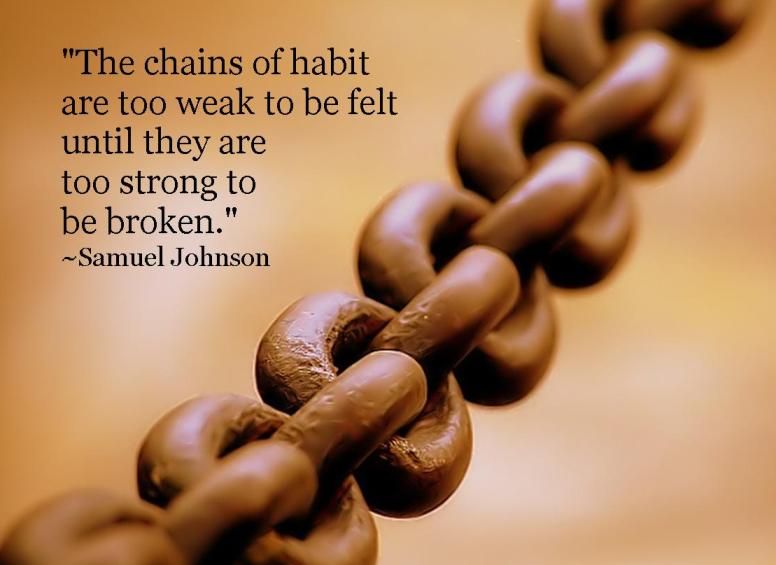One of the surefire ways to fix a bad habit is to add friction to the habit. Changing a bad habit requires steadily replacing it with a healthier and good one. Bad habits are easier to form but hard to live with, while good habits are tough to form but easier to live with. Habit formation is an easy but hard activity that requires self-discipline, commitment, patience, trusting the process and following through despite the challenges and obstacles that appear.
I recently tackled one of the not-so-good habits I have formed in my years of internet use. A typical work session used to involve opening at least 20+ browser tabs at once and, in the process, deluding myself that I was multitasking. After struggling with this situation for years, I decided to experiment and finally deal with it, as it was reducing my productivity.
“The chains of habit are too weak to be felt until they are too strong to be broken.”― Samuel Johnson
Tab Limiter to the Rescue.
After doing some research on how to become more focused on my internet activities, I stumbled on the Tab Limiter Chrome extension, which has totally transformed my productivity. The Tab Limiter helps users limit the number of open tabs – in total and per window. Adding friction to my multi-tasking tendencies, I have become more focused and gained valuable time to do more deep work. The Tab Limiter hack is such an easy solution that I began to wonder why I was not using the extension all this while. Like most of the solutions to our issues in life, they are simple, but we overcomplicate them because of overthinking.
Tab limiter helps you get back control over your browsing – by limiting the number of tabs you can open at once. You can specify the number of tabs in total and per window. Moreover, you can show a customizable message when the tab limit is hit.
In Samuel Johnson’s “The Vision of Theodore” allegorical tale, he writes:
“It was the peculiar artifice of Habit not to suffer her power to be felt at first. Those whom she led, she had the address of appearing only to attend, but was continually doubling her chains upon her companions; which were so slender in themselves, and so silently fastened, that while the attention was engaged by other objects, they were not easily perceived. Each link grew tighter as it had been longer worn, and when, by continual additions, they became so heavy as to be felt, they were very frequently too strong to be broken.”
The diminutive chains of habit are seldom heavy enough to be felt, till they are too strong to be broken.—Samuel Johnson”

Habit Formation 1
The process of building a habit can be divided into four simple steps: cue, craving, response, and reward.
Cue : The cue triggers your brain to initiate a behavior. It is a bit of information that predicts a reward.
Craving: They are the motivational force behind every habit. Without some level of motivation or desire—without craving a change—we have no reason to act”
Response: The response is the actual habit you perform, which can take the form of a thought or an action. Whether a response occurs depends on how motivated you are and how much friction is associated with the behavior.
Reward: Rewards are the end goal of every habit. The cue is about noticing the reward. The craving is about wanting the reward. The response is about obtaining the reward. We chase rewards because they serve two purposes: (1) they satisfy us and (2) they teach us.
If a behavior is insufficient in any of the four stages, it will not become a habit. Eliminate the cue and your habit will never start. Reduce the craving and you won’t experience enough motivation to act.
Make the behavior difficult and you won’t be able to do it. And if the reward fails to satisfy your desire, then you’ll have no reason to do it again in the future. Without the first three steps, a behavior will not occur. Without all four, a behavior will not be repeated.”
How to Create a Good Habit
- The 1st law (Cue): Make it obvious.
- The 2nd law (Craving): Make it attractive.
- The 3rd law (Response): Make it easy.
- The 4th law (Reward): Make it satisfying
How to Break a Bad Habit
- Inversion of the 1st law (Cue): Make it invisible.
- Inversion of the 2nd law (Craving): Make it unattractive.
- Inversion of the 3rd law (Response): Make it difficult.
- Inversion of the 4th law (Reward): Make it unsatisfying.
Habits are like the atoms of our lives. Each one is a fundamental unit that contributes to your overall improvement. At first, these tiny routines seem insignificant, but soon they build on each other and fuel bigger wins that multiply to a degree that far outweighs the cost of their initial investment.
Meditations
Daily Calm with Tamara Levitt – Distortions
When we are depressed, we contemplate everything that we’ve done wrong, what we’ve lost, what we think we’ve missed out on, and what we think we can’t change. Our thoughts become exaggerated and fear-based. Negative thoughts lead to more negative thoughts, and our thinking can culminate in a cyclone of ruminations.
In a depressed state, we identify so strongly with our thoughts we take them as facts, but it is important to understand that when we are in this condition, thoughts aren’t to be trusted. With awareness, it is easier to view these extreme modes of thinking that we fall into, we can step back and observer our thoughts almost as a witness. Recognizing that they have a life of their own, we notice how repetitive thoughts are and recognize patterns. Perhaps we see the world in black and white, all or nothing thinking, we jump into conclusions, discount the positive and fall into all kinds of cognitive distortions.
We get caught in a loop, playing back the same thoughts and beliefs over and over again. It is no wonder that depression feels like such a battle.
“We are sitting under the tree of our thinking minds, wondering why we’re not getting any sunshine!” —RAM DASS,
Daily Jay with Jay Shetty – Fitting In vs Belonging
When we try to fit in, we want to be part of a certain group so badly that we’ll contort ourselves to be accepted. That inclination to conform is natural because we all want to feel a sense of connection. All of this shape-shifting disconnects us from ourselves, and on top of that, those relationships that we are building are constructed on a false foundation.
Belonging is like an acapella group, everyone has got their role to play. There is the soprano, alto, and baritone, plus the singer holding down the low notes on the base and, of course, the beatboxer. When we belong, we are not united by sameness but by something more meaningful, by shared values or interests or goals. Under that broad umbrella, we are free to be authentic and dance to our own drummer or beatboxer.
“Fitting in is about assessing a situation and becoming who you must be to be accepted. Belonging, on the other hand, doesn’t require us to change who we are; it requires us to be who we are.” ― Brené Brown, The Gifts of Imperfection
Daily Trip with Jeff Warren – Interrupt Stress
Podcast
- Productivity Fatigue: Is Striving To “Get Things Done” Causing Burnout? | Cal Newport
All the best in your quest to get better. Don’t Settle: Live with Passion



Comments are closed.